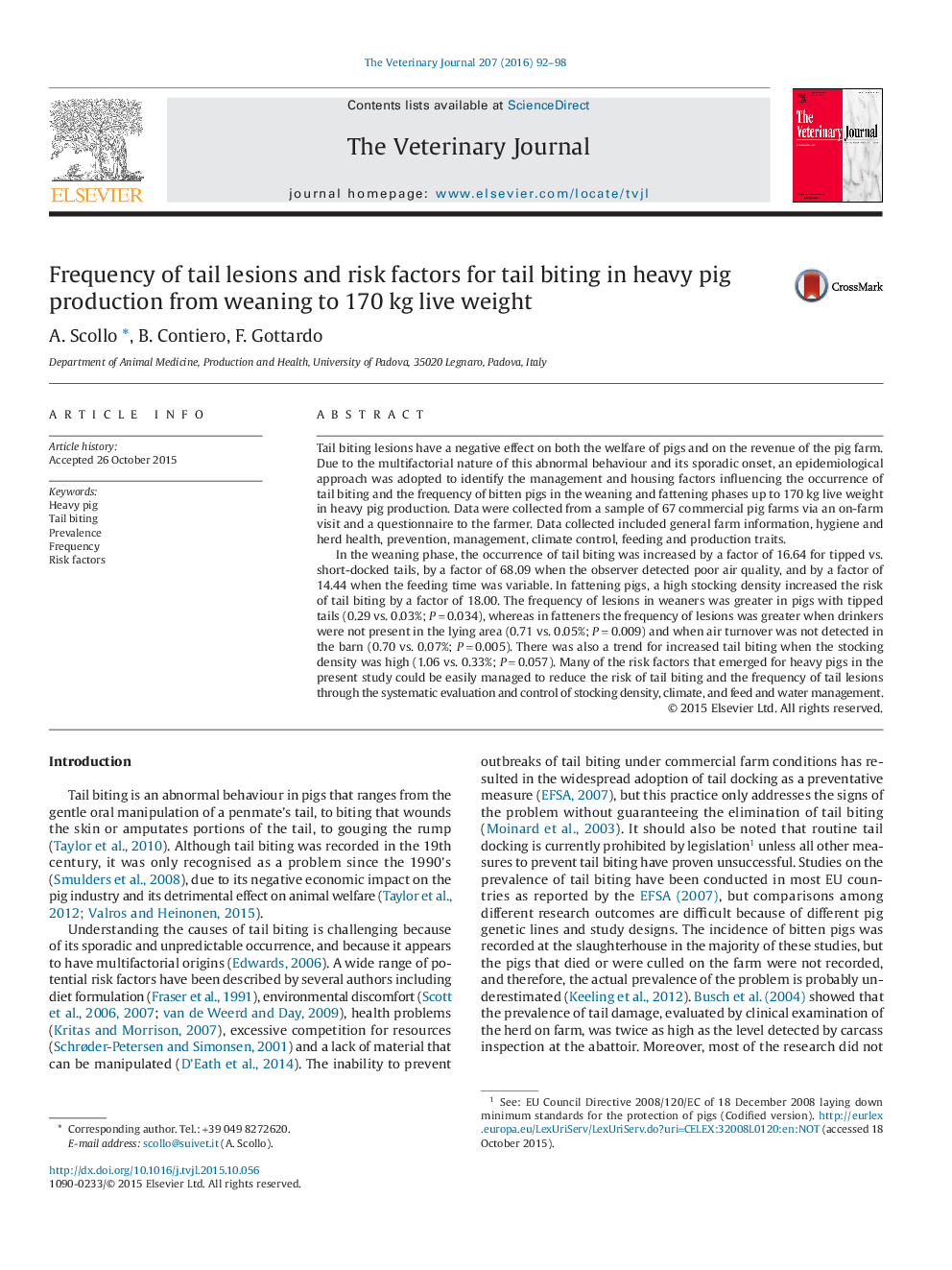| کد مقاله | کد نشریه | سال انتشار | مقاله انگلیسی | نسخه تمام متن |
|---|---|---|---|---|
| 5797529 | 1555236 | 2016 | 7 صفحه PDF | دانلود رایگان |

- A low prevalence of tail biting (0.18%) emerged in the heavy pig production.
- Fattening farms showed a greater percentage of bitten pigs (0.26 vs. 0.09%) than weaning units.
- In weaners, the risk factors for tail biting were poor air quality, timeliness in feed supply and tail length after docking.
- In fatteners, the risk factor for tail biting was the stocking density.
- Prevalence of tail lesions was influenced by tail length, drinkers' location, stocking density and air turnover.
Tail biting lesions have a negative effect on both the welfare of pigs and on the revenue of the pig farm. Due to the multifactorial nature of this abnormal behaviour and its sporadic onset, an epidemiological approach was adopted to identify the management and housing factors influencing the occurrence of tail biting and the frequency of bitten pigs in the weaning and fattening phases up to 170âkg live weight in heavy pig production. Data were collected from a sample of 67 commercial pig farms via an on-farm visit and a questionnaire to the farmer. Data collected included general farm information, hygiene and herd health, prevention, management, climate control, feeding and production traits.In the weaning phase, the occurrence of tail biting was increased by a factor of 16.64 for tipped vs. short-docked tails, by a factor of 68.09 when the observer detected poor air quality, and by a factor of 14.44 when the feeding time was variable. In fattening pigs, a high stocking density increased the risk of tail biting by a factor of 18.00. The frequency of lesions in weaners was greater in pigs with tipped tails (0.29 vs. 0.03%; Pâ=â0.034), whereas in fatteners the frequency of lesions was greater when drinkers were not present in the lying area (0.71 vs. 0.05%; Pâ=â0.009) and when air turnover was not detected in the barn (0.70 vs. 0.07%; Pâ=â0.005). There was also a trend for increased tail biting when the stocking density was high (1.06 vs. 0.33%; Pâ=â0.057). Many of the risk factors that emerged for heavy pigs in the present study could be easily managed to reduce the risk of tail biting and the frequency of tail lesions through the systematic evaluation and control of stocking density, climate, and feed and water management.
Journal: The Veterinary Journal - Volume 207, January 2016, Pages 92-98